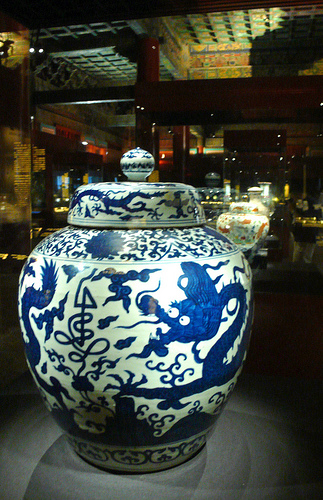Some cool manufacturing in china photos:
Industrial Darwinism

Image by kevin dooley
About half of all companies fail in 5 years, and 70% soon after ten years. Their facilities nevertheless stand for long following, reminding us of our industrial history. From here:
A organization that has known as Benton Harbor house for a lot more than 70 years has announced it really is closing down. From automotive ashtrays to vehicle spoilers, and even hospital equipment, Modern day Plastics molded it and created it all.
But with growing financial pressures, the plastics manufacturer has melted down. About 100 staff received news Monday that, come Tuesday, they are not needed.
Oil rates are a significant element, since all plastics are petroleum primarily based. Vice President Robert Orlaske says their purchasers weren’t willing or capable to match the bottom line.
“We had to pass on price increases to our customers, and a lot of them wouldn’t take it, so they shopped other places for moving their perform. And a lot of them have chosen to go to China or Mexico exactly where the labor is a lot less costly,” Orlaske tells NewsCenter 16.
The company says they’ll do all they can for the people who’ve labored for them. They’ll hold meetings with their employees this week to assist them find new jobs and get them job education.
Organization leaders are in negotiations to sell the Coloma plant. If the sale goes through, it really is likely that most if not all of the present personnel at that plant will keep their jobs.
Vivitar Ultra Wide and Slim with Kodak EBX one hundred Elitechrome XPRO.
china ceramics – blue dragons

Image by Xuan Che
Palace Museum, Beijing.
北京故宫
Blue and white covered jar with cloud and dragon, marked with the word "Longevity"
Jiajing period, Ming Dynasty, 1522-1566
The Palace Museum holds 340,000 pieces of ceramics and porcelain, like the imperial collections from the Tang Dynasty and the Song Dynasty, as well as pieces commissioned by the Palace, and, sometimes by the Emperor personally, thus represents the very best of porcelain production in China. The ceramic collection of the Palace Museum represents a complete record of Chinese ceramic production over the previous 8,000 years, as effectively as 1 of the biggest such collections in the planet.
The Ming dynasty saw an extraordinary period of innovation in ceramic manufacture. Kilns investigated new tactics in design and style and shapes, showing a predilection for color and painted style, and an openness to foreign forms. The Yongle Emperor (1402-24) was specifically curious about other nations (as evidenced by his assistance of the eunuch Zheng He’s extended exploration of the Indian Ocean), and enjoyed uncommon shapes, many inspired by Islamic metalwork, (see for instance two vessels from the Asian Art Museum, a Buddhist Ablution Basin, and Handled Ewer). For the duration of the Xuande reign (1425–35), a technical refinement was introduced in the preparation of the cobalt utilized for underglaze blue decoration. Prior to this the cobalt had been brilliant in color, but with a tendency to bleed in firing by adding a manganese the color was duller, but the line crisper. Xuande porcelain is now considered among the finest of all Ming output. Enameled decoration (such as the a single at left) was perfected under the Chenghua Emperor (1464-1487), and significantly prized by later collectors. Indeed by the late sixteenth century, Chenghua and Xuande era functions had grown so a lot in popularity, that their costs practically matched genuine antique wares of Song or even older. This esteem for comparatively recent ceramics excited a lot scorn on the portion of literati scholars (such as Wen Zhenheng, Tu Long, and Gao Lian, who is cited beneath) these guys fancied themselves arbiters of taste and found the painted aesthetic ‘vulgar.’
In addition to these decorative innovations, the late Ming period underwent a dramatic shift towards a marketplace economy, exporting porcelain about the globe on an unprecedented scale. As a result aside from supplying porcelain for domestic use, the kilns at Jingdezhen became the main production centre for big-scale porcelain exports to Europe starting with the reign of the Wanli Emperor (1572-1620). By this time china clay (kaolin) and porcelain stone (known as ‘pottery stone’ above) had been mixed in about equal proportions. China clay created wares of excellent strength when added to the paste it also enhanced the whiteness of the physique – a trait that became a significantly sought soon after house, especially when kind blue-and-white wares grew in popularity. Porcelain stone could be fired at a reduce temperature (1250°C) than paste mixed with china clay, which necessary 1350°C. These sorts of variations had been important to preserve in mind since the huge southern egg-shaped kiln varied greatly in temperature. Near the firebox it was hottest near the chimney, at the opposite finish of the kiln, it was cooler.
For far more, see wikipedia.